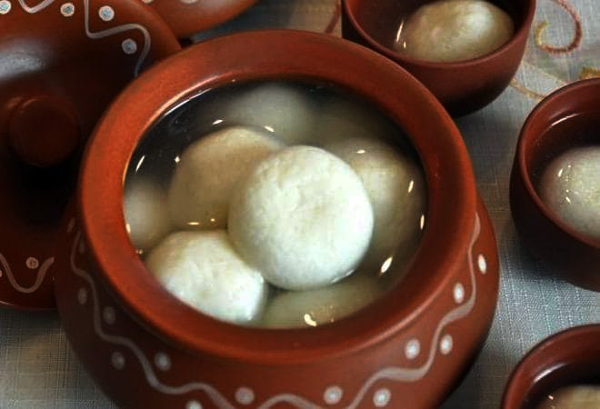What does Kandhamal turmeric, temple prasad from Palani and the Dindigul lock have in common? All three received the coveted Geographical Indication (GI) tag this year.
Approved by the Geneva-headquartered World Trade Organization, a GI tag recognises the place of origin of a product and the specific qualities or means of production associated with it. Acting as a certification, it is a way of ensuring that similar products from elsewhere cannot be sold under this name. The tag is valid for a decade, after which it can be renewed for another 10 years. Some of the well-known GI tags from around the world are Parmesan Reggiano cheese (Italy), Scotch whisky (Scotland) and Champagne (France).
In India, the GI tag is governed by the Geographical Indication of Goods (Registration and Protection) Act which came into being in 1999. That was the year Darjeeling tea became the country’s first product to bag a GI tag. Since then, 344 more products have been tagged. Tamil Nadu accounts for 31 of these, with the ‘Panchamirtham’ from Palani becoming the first prasad to clinch the honour last month. The panch in the name refers to the five key ingredients in the prasad — banana, jaggery, cow ghee, cardamom and honey. Dates and sugar crystals are added for taste.
The Dindigul lock and Kandangi sari, also from TN, are traditional handmade products that face an uncertain future owing to a dying interest in them. Dindigul locks are world famous because of their durability, earning their city of its origin the moniker ‘lock city’. With cheaper machine-made locks flooding the market, the old-style handcrafted Dindigul lock has few takers today. The artisans hope that the GI tag will lend a sheen to their locks, highlight the unique manufacturing process and help popularise them.
Makers of the Kandangi sari, too, hope the GI tag will help distinguish their distinctive weave from lookalikes produced in other parts of the state.
From elsewhere around the country, 14 products made it to the list this year. The GI tag is granted by governments including Kandhamal haldi (turmeric) from Odisha, Himachali kaala zeera (black cumin) from Himachal Pradesh, jeeraphool rice from Chhattisgarh, Sirsi supari (betelnut) and Coorg Arabica coffee from Karnataka, Marayur jaggery from Kerala, and Himachali Chulli (apricot) oil.
Araku Valley Arabica coffee, cultivated organically in a region spread over parts of Andhra Pradesh and Odisha, got the GI tag last year. The Girijan Cooperative Corporation of the AP government and the Central government-managed Coffee Board of India had applied for it simultaneously. That instantly helped catapult the coffee to global attention and it has already earned a name for itself in France, says Manoj Kumar, a plantation owner in Araku Valley. “While coffee from neighbouring states was well-known, it was not until recently that coffee grown in these regions was taken note of. The GI tag helped us get global recognition,” he says.
Apart from Araku Valley Arabica and Coorg Arabica, the other speciality coffees from India that have got GI recognition include Chikmagalur Arabica coffee, Bababudangiris Arabica coffee and Wayanad Robusta coffee. The commerce ministry’s department for promotion of industry and internal trade is responsible for registering GIs in India. Karnataka has, with 42, the maximum number of GI-tagged items, which range from Byadagi chillies to Mysore sandal soap and Dharwad peda. Mysuru alone boasts 18 GI-tagged products.
This historic town with centuries-old royal heritage is in the news for yet another GI tag, this time for the Mysore pak — the ghee-laden sweet made of gram flour. It all began, like most things nowadays, with fake news about how neighbouring TN was applying for a GI tag for the sweet. This promptly saw the family members of Kakasura Madappa, widely considered to have invented the pak in 1935, during the reign of king Nalwadi Krishnaraja Wadiyar, rushing to apply for the recognition.
This isn’t the first instance where a ‘bitter’ battle was fought over a sweet GI tag, either. The Bengali roshogolla and the Odisha rasagola each have a GI tag. While the West Bengal variant got the tag two years ago, Odisha won its this year. Two separate tags for essentially the same sweet recognise the differences in taste and texture that are specific to each region. The roshogolla has more bite, while the rasagola is juicy and non-chewy. The former traces its origin to 1845, and is believed to have been created by a sweetmeat seller named Nobin Chandra Das at his Bagbazar residence in Kolkata, while the latter is said to have been offered to Lord Jagannath of Puri from the 12th century. According to legend, after returning from the city’s nine-day rath yatra, Lord Jagannath offers the rasagola to mollify his consort, Goddess Laxmi, who is angry at his long absence. Commemorated as Niladri Baje, this annual festival is today celebrated as rasagola dibas in Odisha.
During the bid for the GI tag, when the committee set up by the Odisha government struggled to produce any strong evidence, Odia scholar Asit Mohanty managed to dig up a reference to the rasagola in the 15th-century Dandi Ramayana. He also quoted from other Odia and Sanskrit texts to prove that Indians knew how to make cottage cheese — used to make the rasagola and roshogolla — long before the Portuguese brought it to India.
Source: THBL
Image Courtesy: BT
You may also like
-
Trade Connect E-platform For Exports Is Single Window, Fast, Accessible And Transformational: Shri Piyush Goyal
-
Dot Simplifies Approval Processes For Telecom Licenses And Wireless Equipment
-
Coal Production and Supply Trends on Positive Trajectory
-
Union Minister To Release Booklets On Promotion Of Indigenous Species & Conservation Of States Fishes
-
2nd India-Japan Finance Dialogue held in Tokyo on 6th September, 2024
